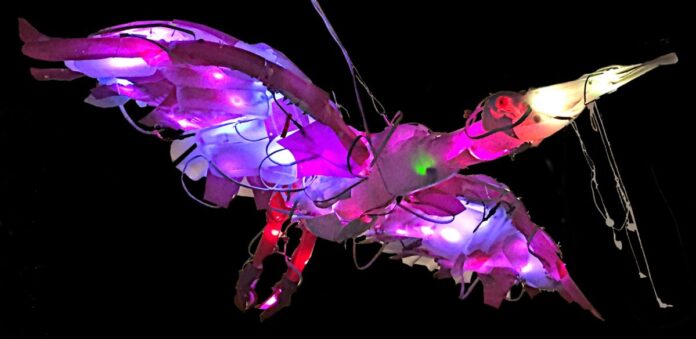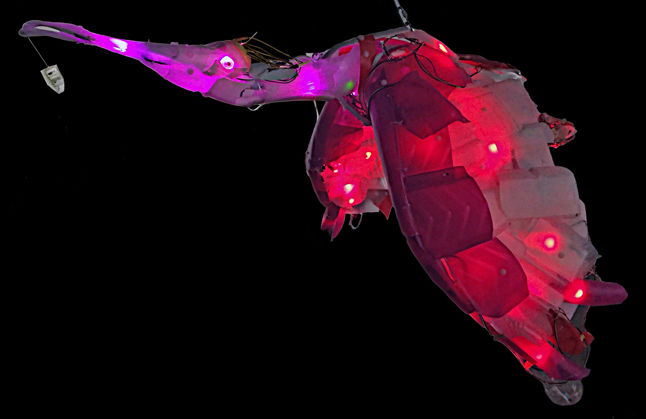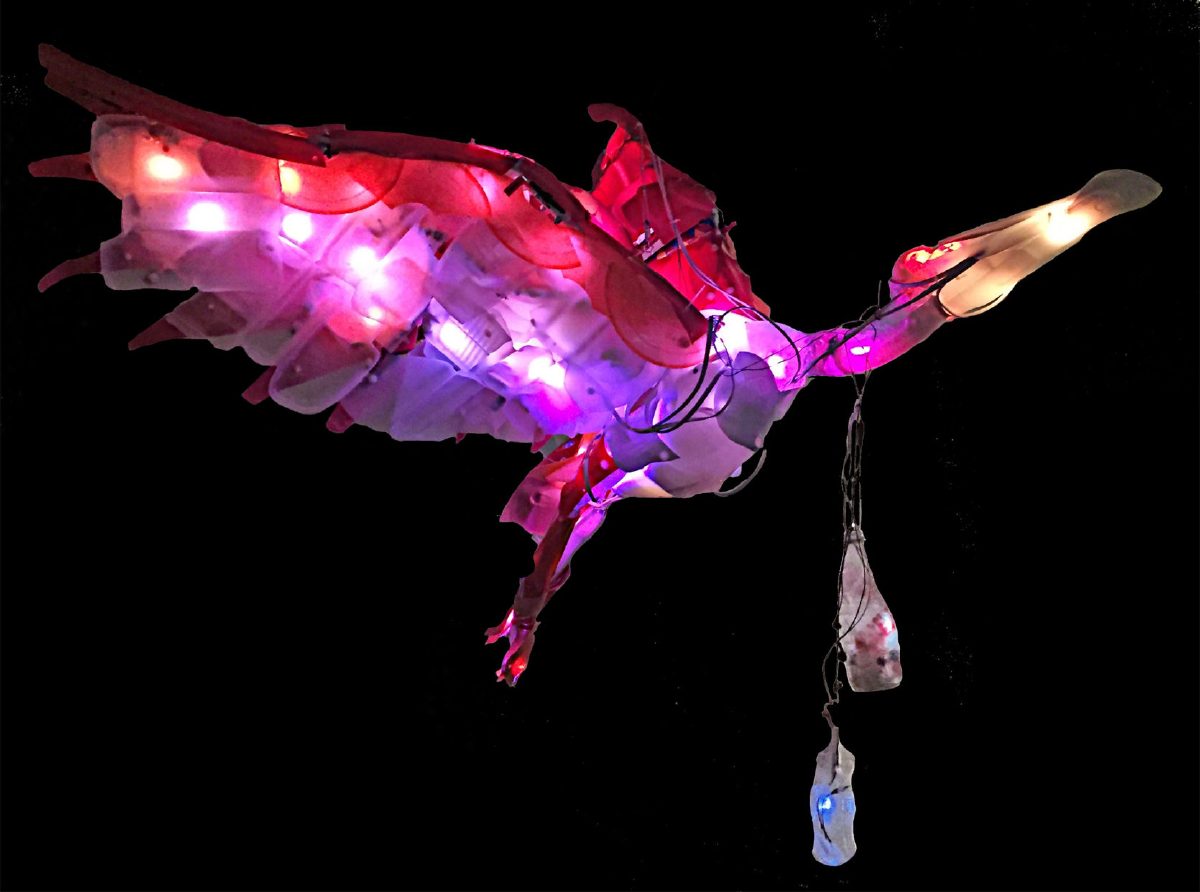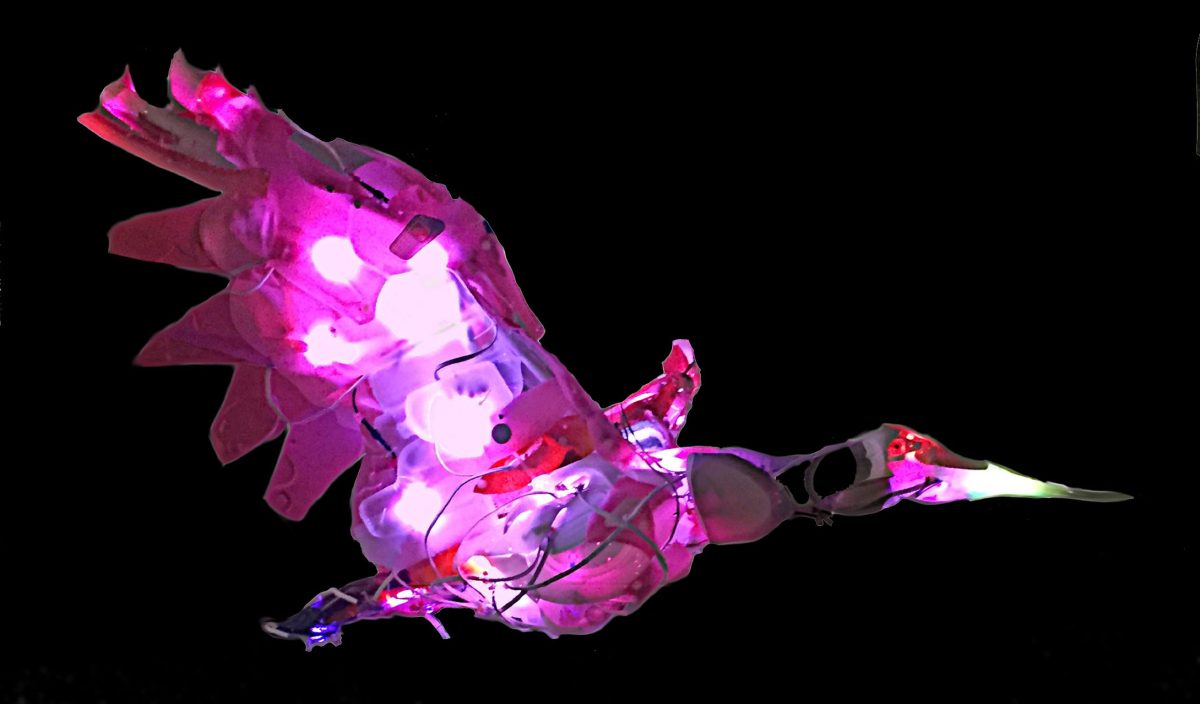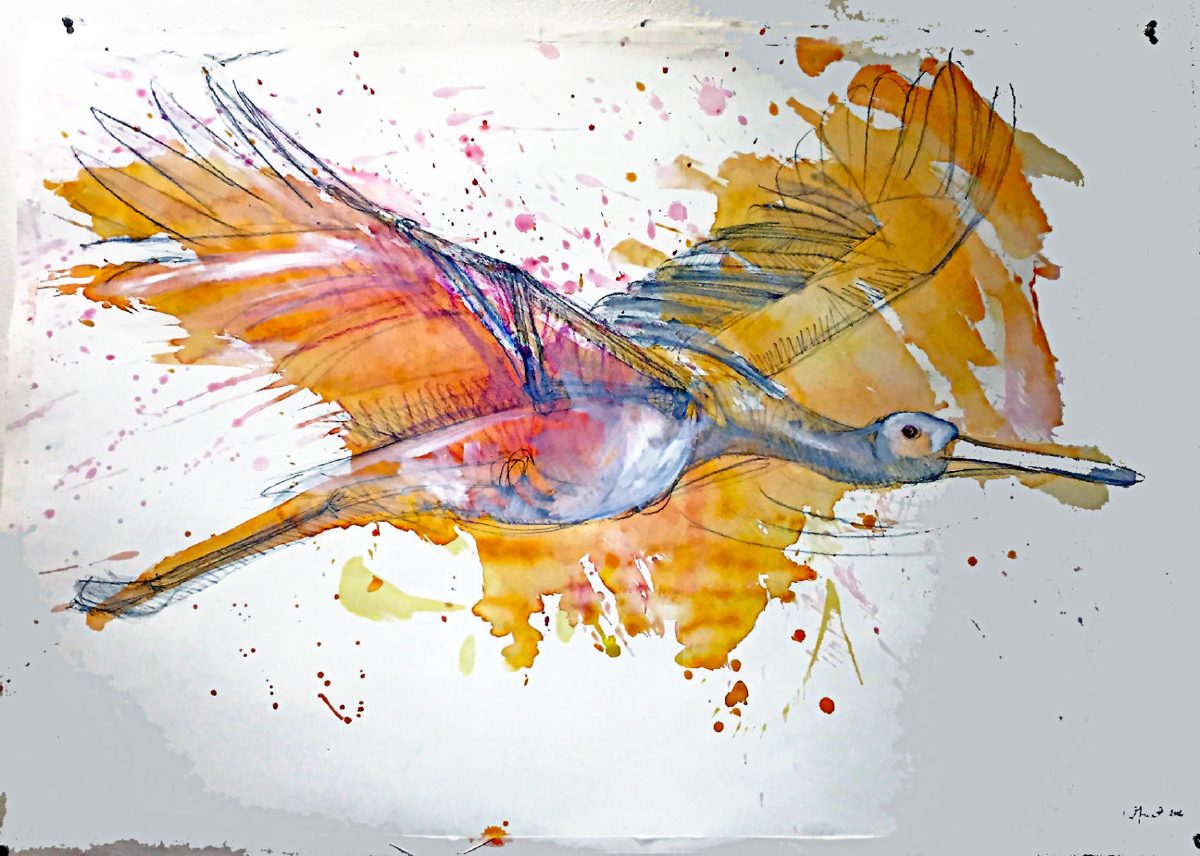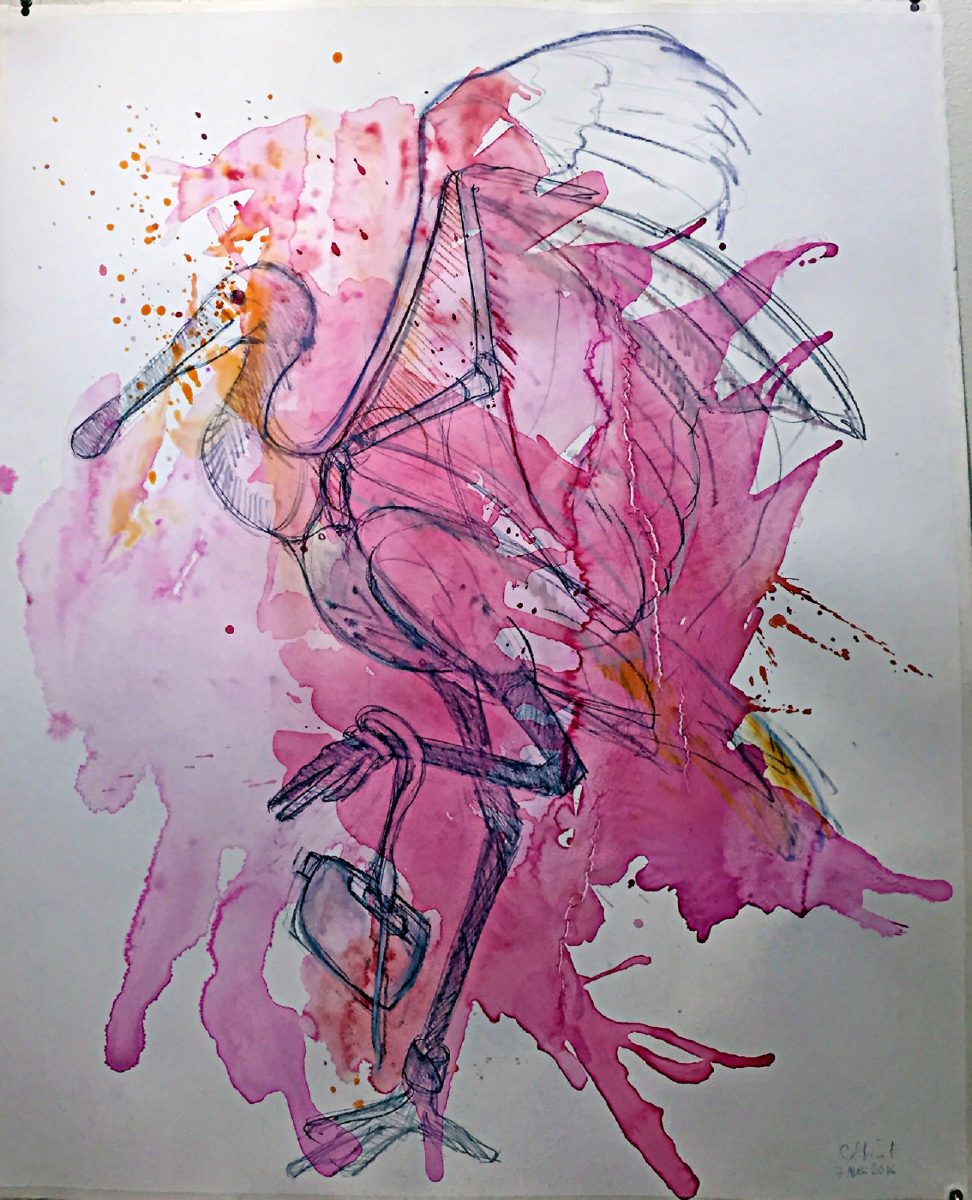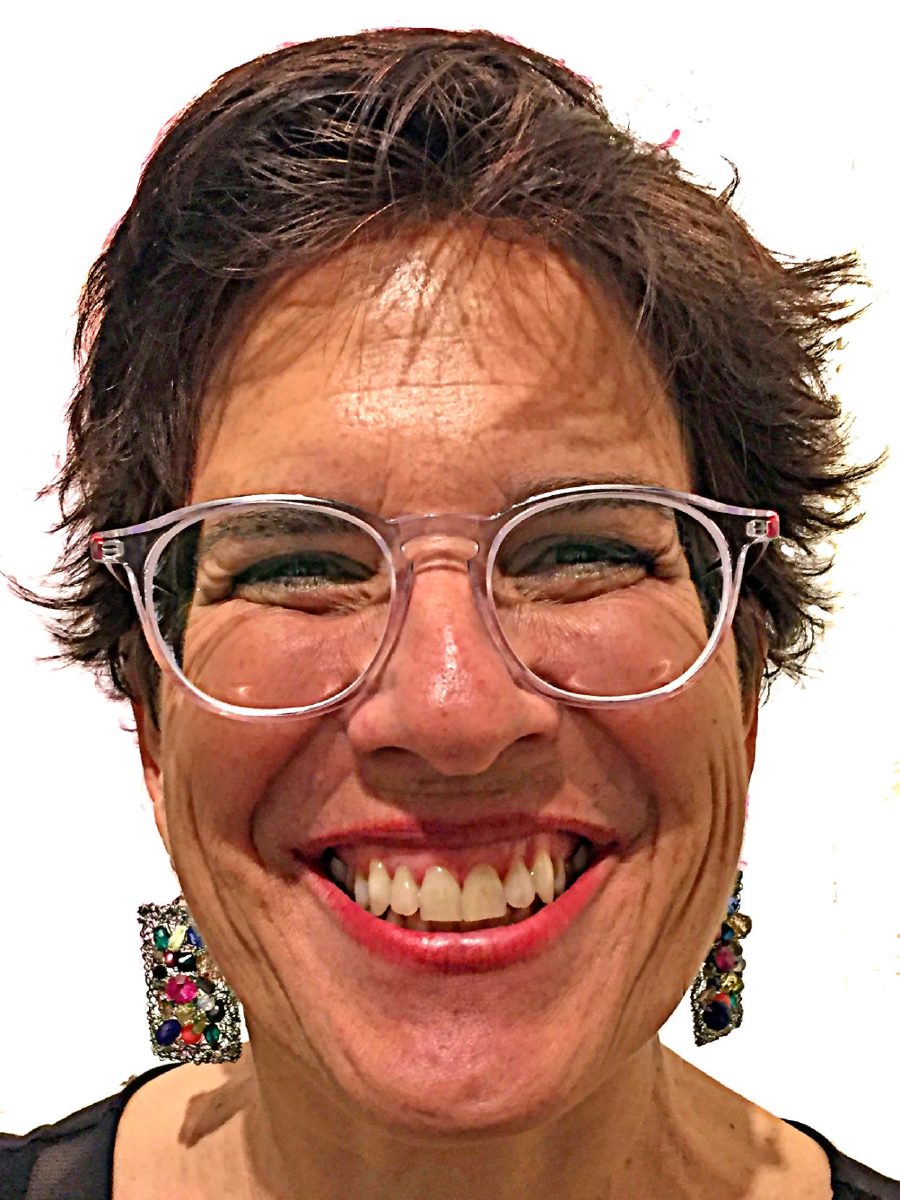NANCY MOYER | SPECIAL TO THE MONITOR
Walking into the darkened gallery at the International Museum of Art & Science, or IMAS, there is a feeling of venturing into a mysterious cavern. Is it a magical or ominous place?
Large birds hover closely overhead, glowing with vividly colored lights pulsating from the very core of their being. Closer inspection reveals that something is happening here; each bird carries a strange cargo. The realistically scaled Roseate Spoonbills that inhabit this space are constructed out of found plastic materials California-based artist, Cynthia Minet, use for her exhibit, “Migrations.”
Minet sees the Roseate Spoonbill as an analogy for human migrant experiences in this region; her sculptures tell an environmental story of the birds and the people who migrate from Latin America into the United States.
The sculptures are impressive. Using unorthodox materials, Minet has captured the anatomical structure of these birds with a fascinating creative integrity, suggesting at first glance that they must be some kind of weird taxidermy. Not so; she works with discarded plastic objects, re-configuring them to accurately reflect the shapes of her subjects, and then relies on LED lighting to emit the vibrant colorations and dramatic effects. Attractive with their seductive beauty, the LED evokes unnatural radiations. The plastic is a petro-chemical product. The artist’s choice of this material for her creatures carries a deadly message that under-lines the sabotage it continuously inflicts on the environment — the loss of habitats and species due to pollution and climate change.
Plastic strips reminiscent of beverage containers and shipping tapes wrap around the birds’ bodies. Plastic tangled in their legs question their chance at survival. Minet has brilliantly synthesized her artistic explorations of alternative materials with her concerns for social migration and the environment.
As a means of connecting her sculptures more closely to their human counterparts, attached to each winged creation are objects previously transported by migrating people, then lost or abandoned.
“People are being impeded in their safe passage by the wall,” Minet said. “What I’ve seen at the fence … these objects represent that struggle for people trying to gain safe entry. They are materials that I got from here, from McAllen.”
The Spoonbill migration stretches from South America to the Texas gulf coast and depends on a healthy environment for survival; in a sense, human migration parallels that journey into the United States.
The border fence sets up obstacles for both humans and fauna. Minet visited the fence to see what was dropped by crossing migrants, but found only a few things.
Needing more discarded possessions for her sculptures, Sierra Club activist Scott Nicol provided her with Homeland Security bags and several other migrant-abandoned things such as earbuds that hang from one of the sculptures.
Through these discarded items, Minet comments on losses and negative messages such as the empty plastic water bottles, which represent thirst and also endanger the environment.
The LED lights are beautiful, but it is hard not to sense that they may signal danger, something that could happen somewhere along the migration route. The light fills the bodies of these creatures, rhythmically ex-pressing the movement of life — or is it a warning? This exhibition gives the viewer a lot to think about.
Just when we thought nature and the outdoors was a pleasant escape from current problems, we may have to think again.
Nancy Moyer, Professor Emerita of Art at the University of Texas Rio Grande Valley, is an art critic for The Monitor. She may be reached at [email protected].
IF YOU GO
“Migrations” by Cynthia Minet
Where: International Museum of Art & Science, 1900 Nolana Ave.
When: Through Sept. 4
Hours: 9 a.m. to 3 p.m. Tuesday to Thursday; 9 a.m. to 5 p.m. Friday; 10 a.m. to 5 p.m. Saturday; 1 to 5 p.m. Sunday; 9 a.m. to 8 p.m. on first Thursdays of the month.
Contact: (956) 682-0123 or ww.imasonline.org

